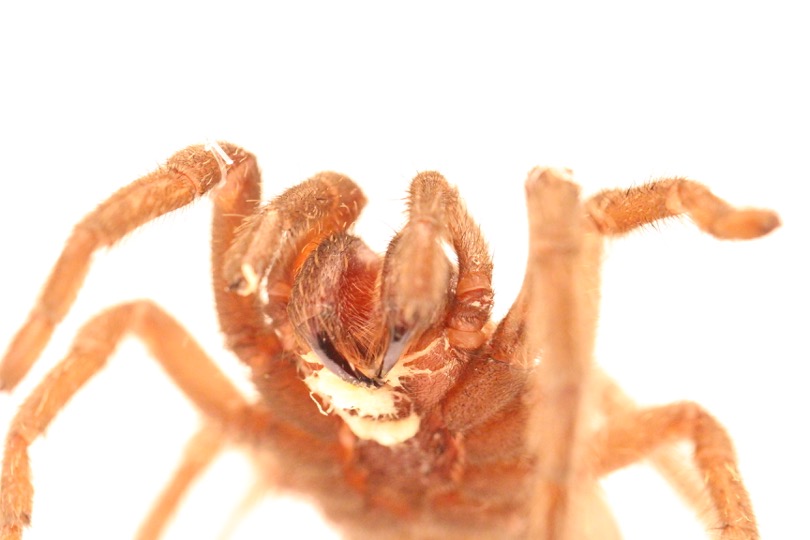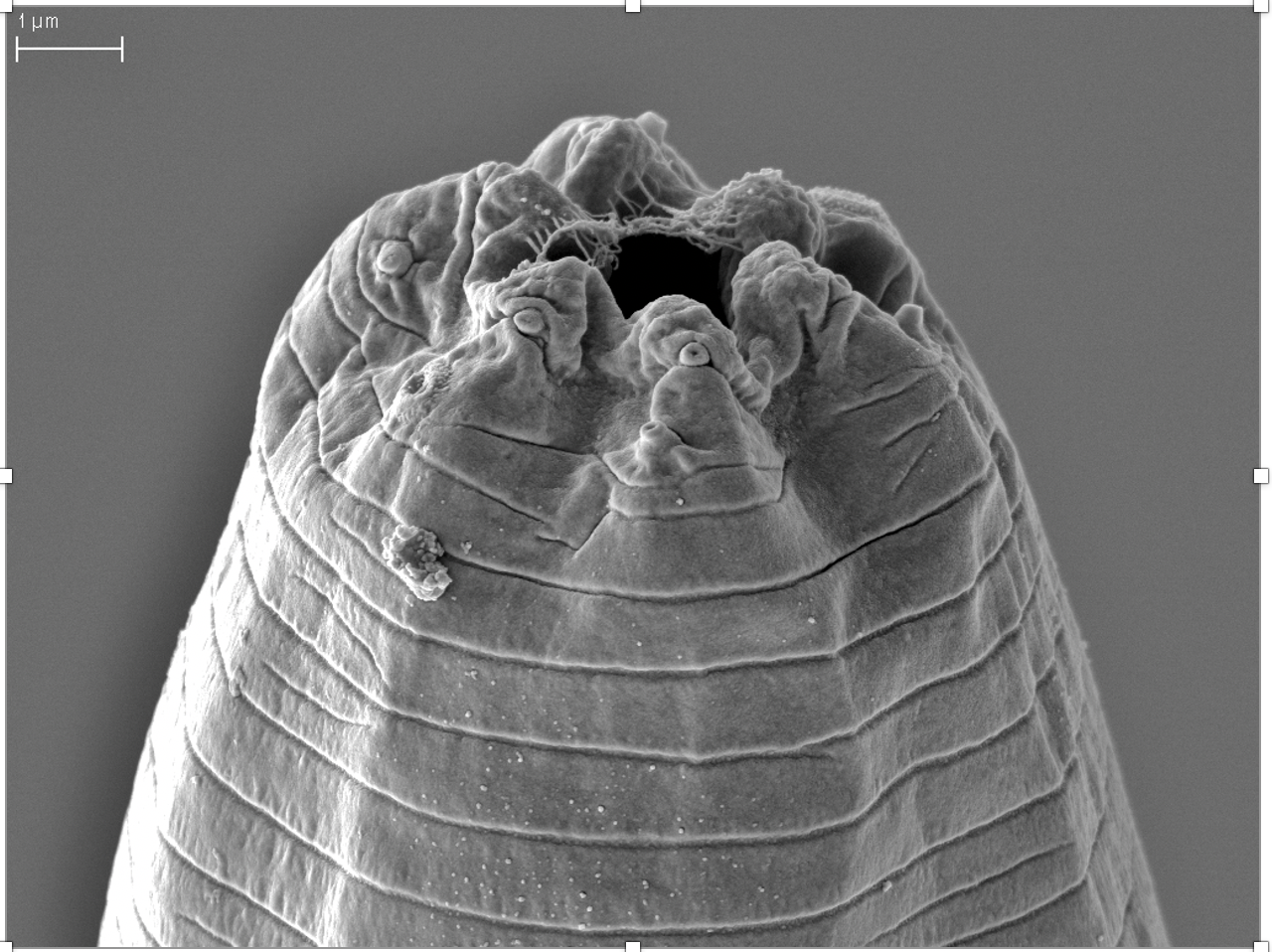Parasitic worm forces tarantulas to tiptoe, then starves them to death
Researchers named the parasite after American actor Jeff Daniels. He was honored.

Researchers have discovered a new species of parasitic worm that makes its home in the mouths of tarantulas — then slowly starves the spiders to death.
The worms first appear as white splotches around a tarantula's mouth, according to a new study published Jan. 17 in The Journal of Parasitology. After being infected, the arachnid host loses control of the appendages that control its fangs, then stops eating. Infected tarantulas may also show other strange behaviors, such as walking on their tiptoes, the study authors wrote.
From there, it's a slow tiptoe toward certain death.
"It may take months because tarantulas don't have to eat particularly often," study co-author Adler Dillman, a parasitologist at the University of California, Riverside (UCR), said in a statement. "However, if they get this infection, they will die of starvation."
Dillman and his colleagues first took note of the killer worms in 2018, when a wholesale tarantula breeder reported multiple unusual deaths among his stock. Each of the affected tarantulas showed a strange white discharge around their mouths. This wasn't spider spit-up, Dillman realized right away: It was a tangled mass of parasitic worms called nematodes, living inside the spiders' fly-holes.

"Nematodes have been around for hundreds of millions of years [and] evolved to infect every kind of host on the planet including humans," Dillman said. "Any animal you know of on planet Earth, there's a nematode that can infect it."
Though more than 25,000 species of nematodes have been described to date, this is only the second species known to infect tarantulas, Dillman added. That gave his lab an exciting opportunity to get to know the elusive, spider-hunting worms.
Sign up for the Live Science daily newsletter now
Get the world’s most fascinating discoveries delivered straight to your inbox.
The team learned that lab-raised nematodes were mostly hermaphrodites, meaning they produced both sperm and eggs, allowing them to self-fertilize their spawn. On average, each hermaphroditic nematode produced 160 offspring in its lifetime — which lasted about 11 days in the lab. (It's unclear how the worm's life span might change when living on a tarantula, the researchers noted.)
The researchers also learned that the nematodes only infected their hosts' mouth areas, leaving the rest of the spider untouched and unharmed.
Still, because of the newly discovered worm's spider-slaying prowess, the team gave the species a name with a bit of Hollywood cache: Tarantobelus jeffdanielsi — named for American actor Jeff Daniels.
"When I first heard a new species of nematode had been named after me, I thought, 'Why? Is there a resemblance?'" Daniels joked in a statement to UCR.
In reality, the name is an homage to Daniels' starring role in the 1990 comedy thriller "Arachnophobia," in which his character saves a small town from a deadly spider infestation.
"Honestly, I was honored by their homage to me and Arachnophobia," Daniels added. "And of course, in Hollywood, you haven't really made it until you've been recognized by those in the field of parasitology."
Originally published on Live Science.

Brandon is the space/physics editor at Live Science. His writing has appeared in The Washington Post, Reader's Digest, CBS.com, the Richard Dawkins Foundation website and other outlets. He holds a bachelor's degree in creative writing from the University of Arizona, with minors in journalism and media arts. He enjoys writing most about space, geoscience and the mysteries of the universe.










